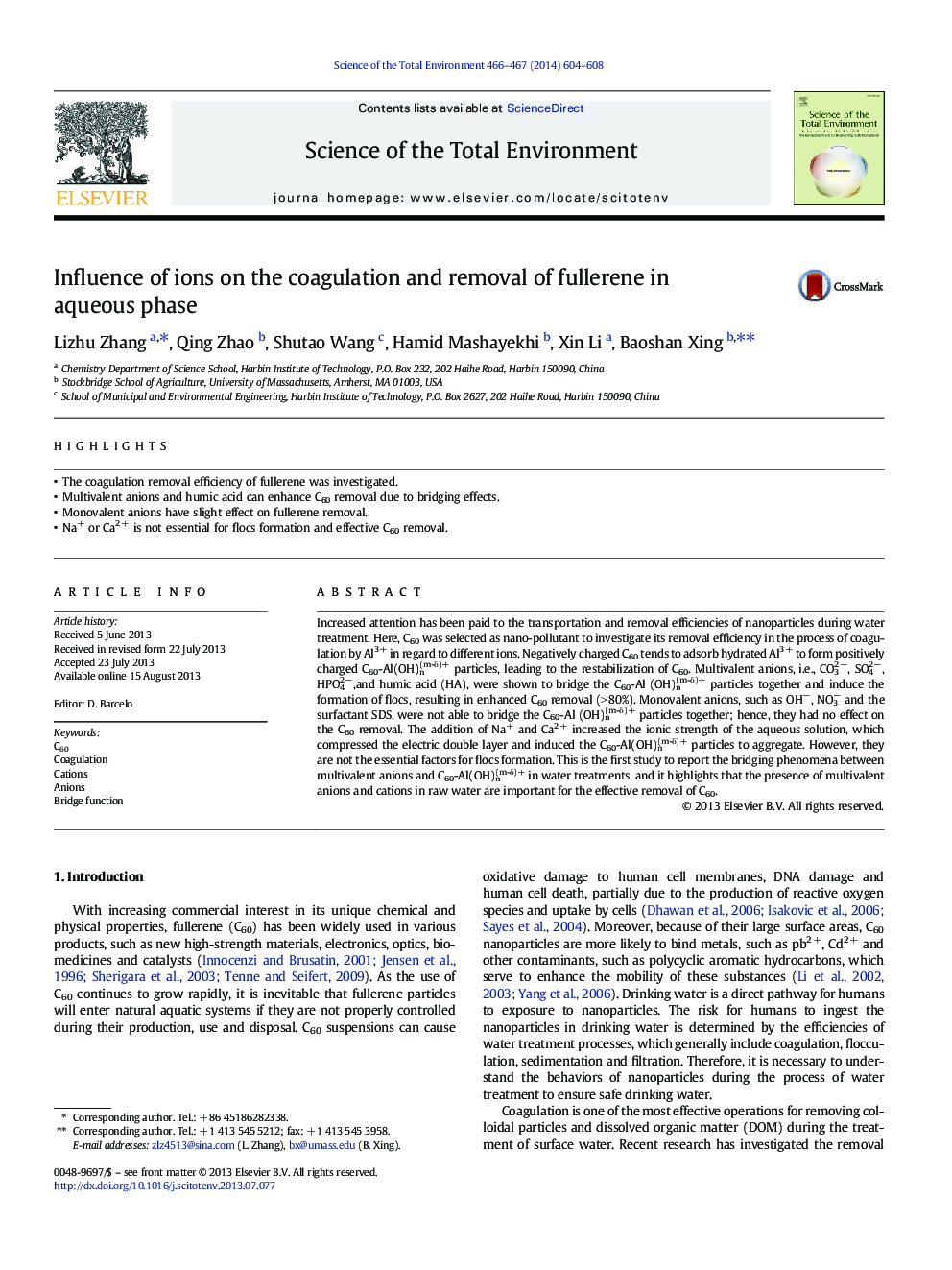| Article ID | Journal | Published Year | Pages | File Type |
|---|---|---|---|---|
| 6332319 | Science of The Total Environment | 2014 | 5 Pages |
Abstract
Increased attention has been paid to the transportation and removal efficiencies of nanoparticles during water treatment. Here, C60 was selected as nano-pollutant to investigate its removal efficiency in the process of coagulation by Al3 + in regard to different ions. Negatively charged C60 tends to adsorb hydrated Al3 + to form positively charged C60-Al(OH)n(m-δ)+ particles, leading to the restabilization of C60. Multivalent anions, i.e., CO32 â, SO42 â, HPO42 â,and humic acid (HA), were shown to bridge the C60-Al (OH)n(m-δ)+ particles together and induce the formation of flocs, resulting in enhanced C60 removal (> 80%). Monovalent anions, such as OHâ, NO3â and the surfactant SDS, were not able to bridge the C60-Al (OH)n(m-δ)+ particles together; hence, they had no effect on the C60 removal. The addition of Na+ and Ca2 + increased the ionic strength of the aqueous solution, which compressed the electric double layer and induced the C60-Al(OH)n(m-δ)+ particles to aggregate. However, they are not the essential factors for flocs formation. This is the first study to report the bridging phenomena between multivalent anions and C60-Al(OH)n(m-δ)+ in water treatments, and it highlights that the presence of multivalent anions and cations in raw water are important for the effective removal of C60.
Related Topics
Life Sciences
Environmental Science
Environmental Chemistry
Authors
Lizhu Zhang, Qing Zhao, Shutao Wang, Hamid Mashayekhi, Xin Li, Baoshan Xing,
